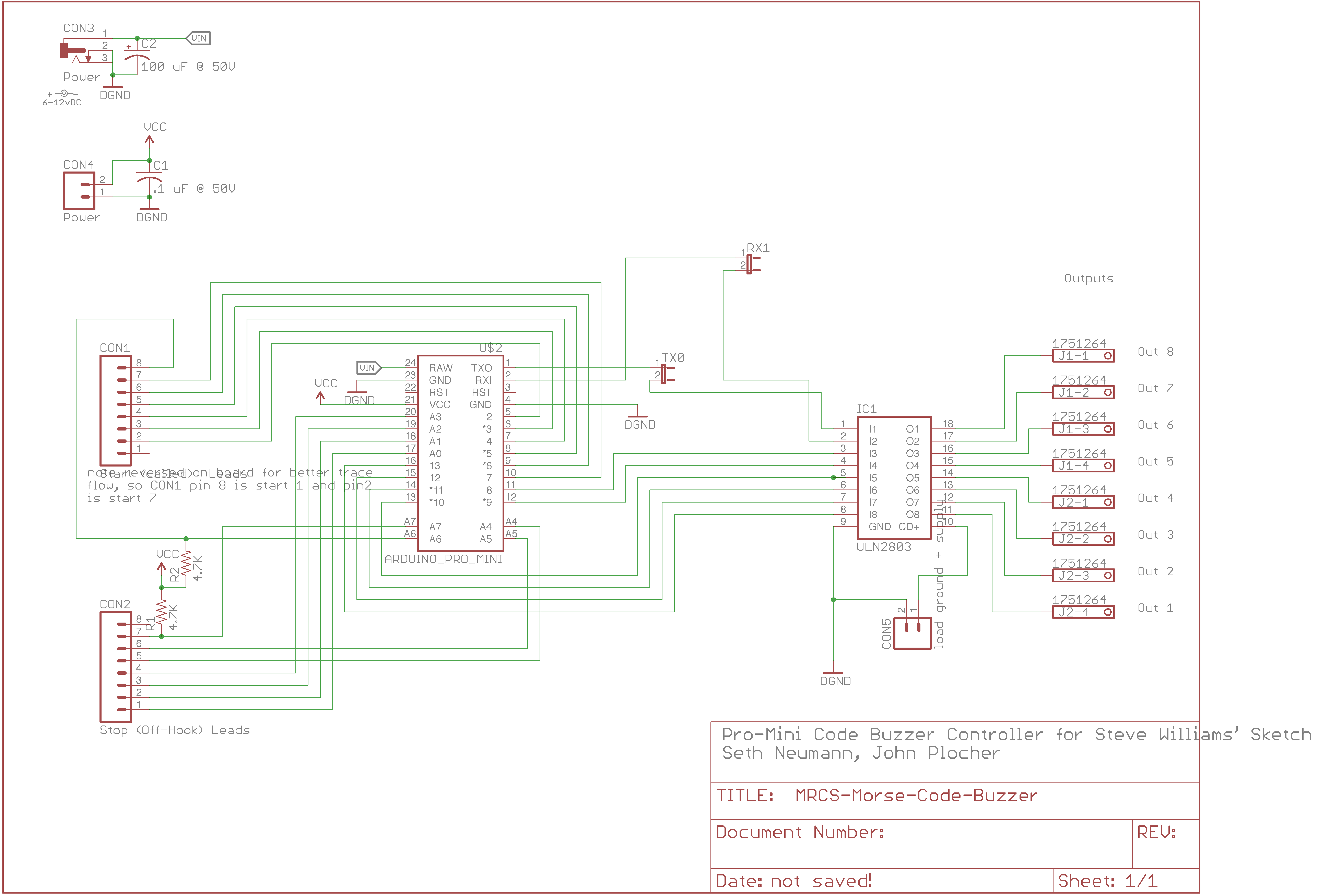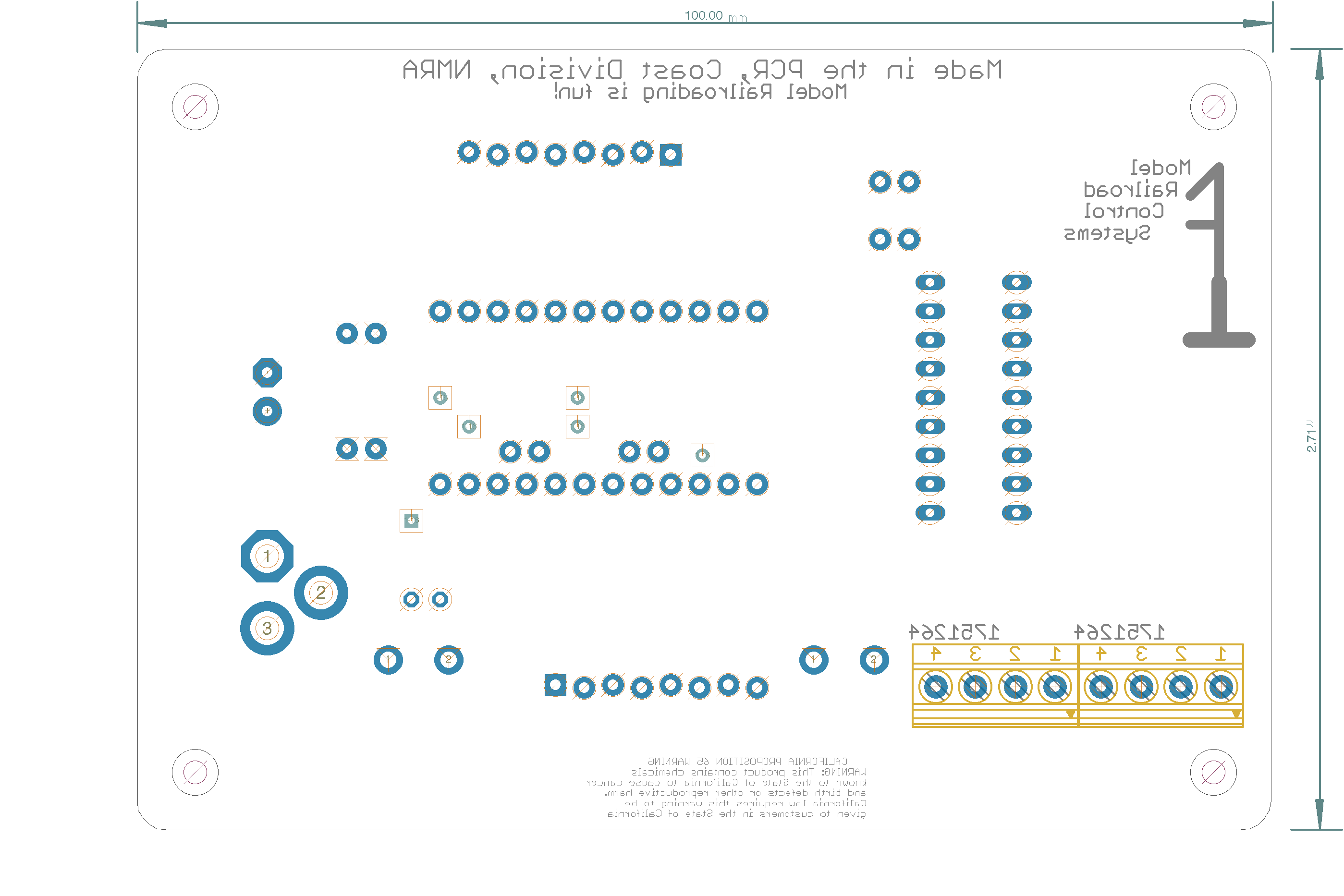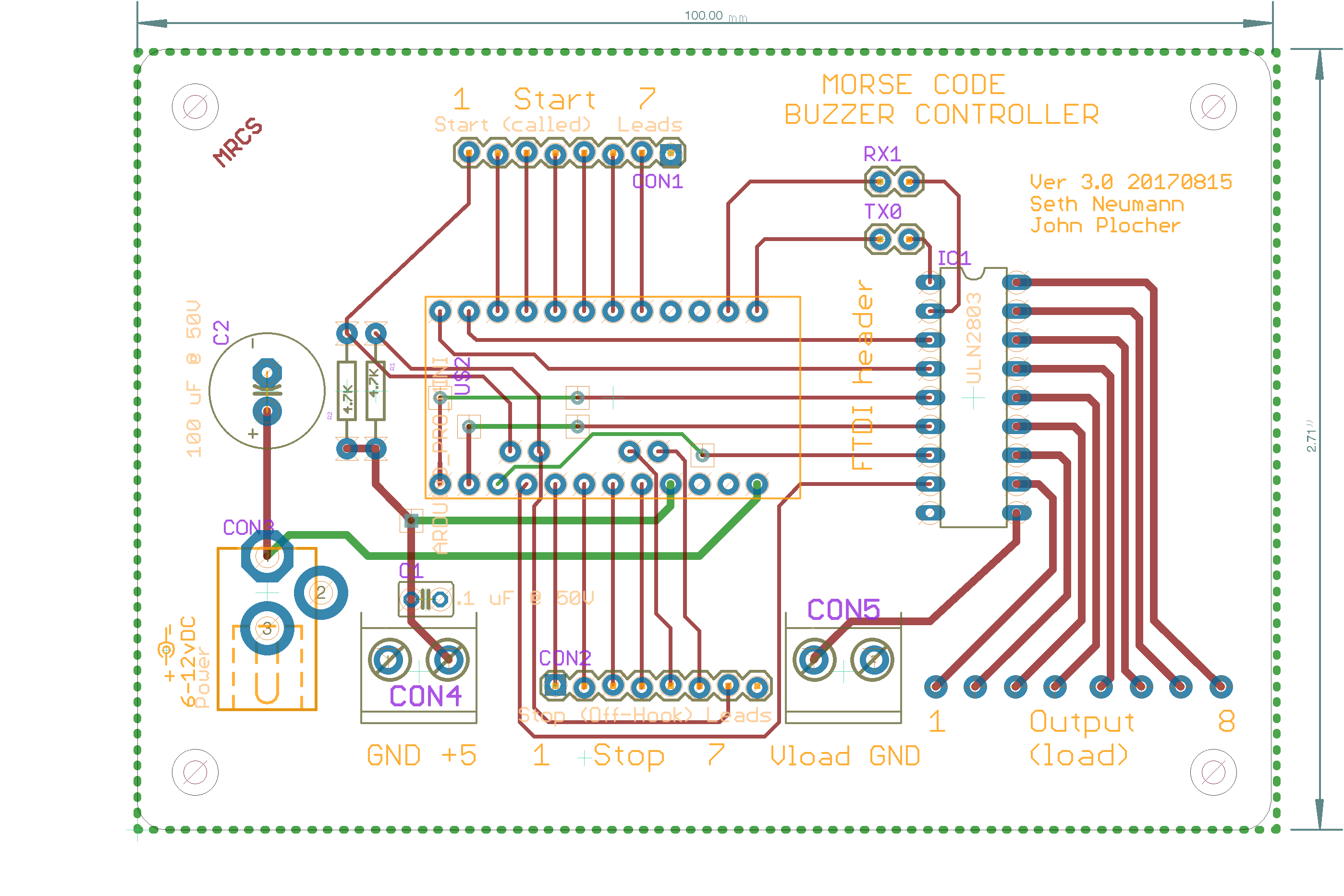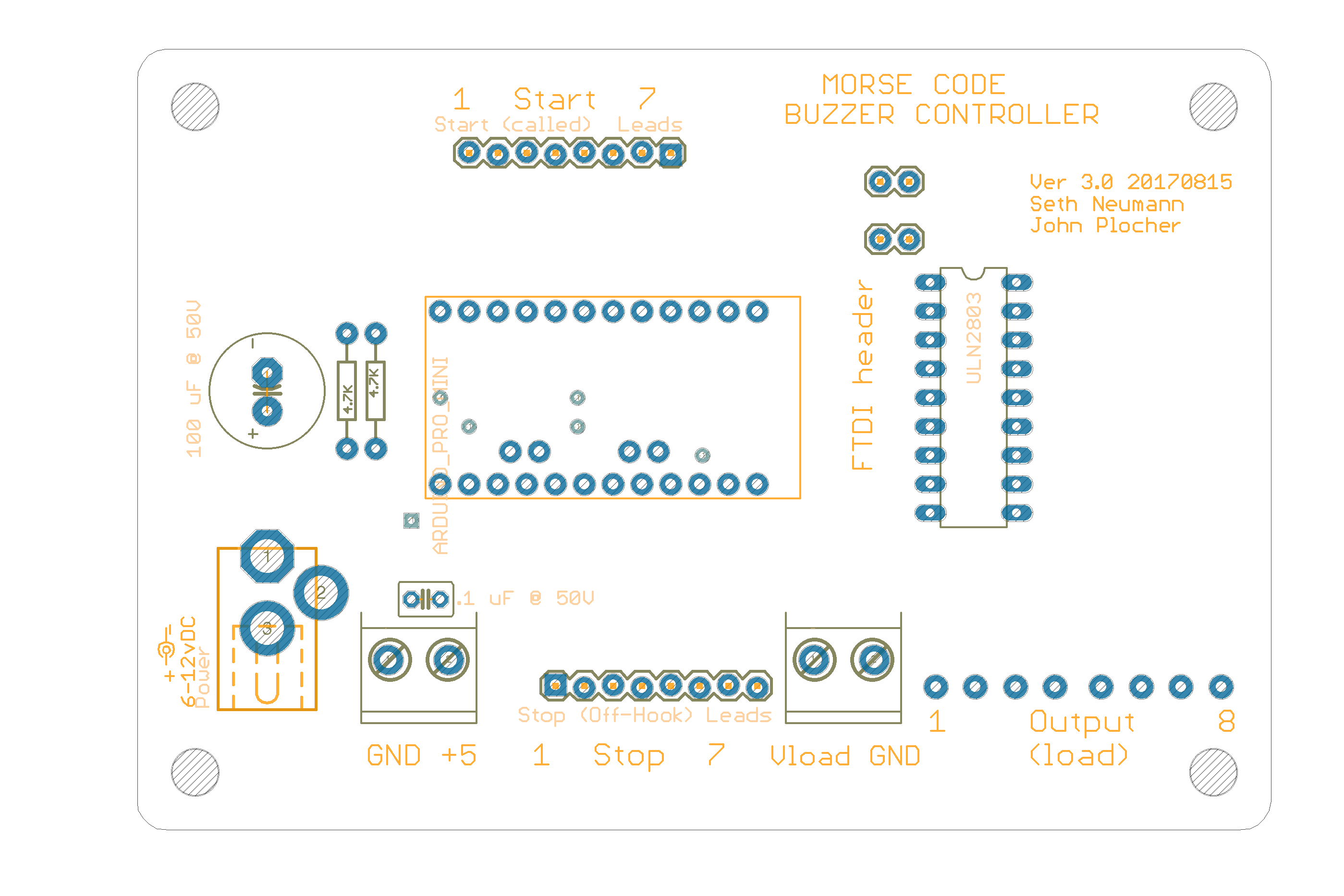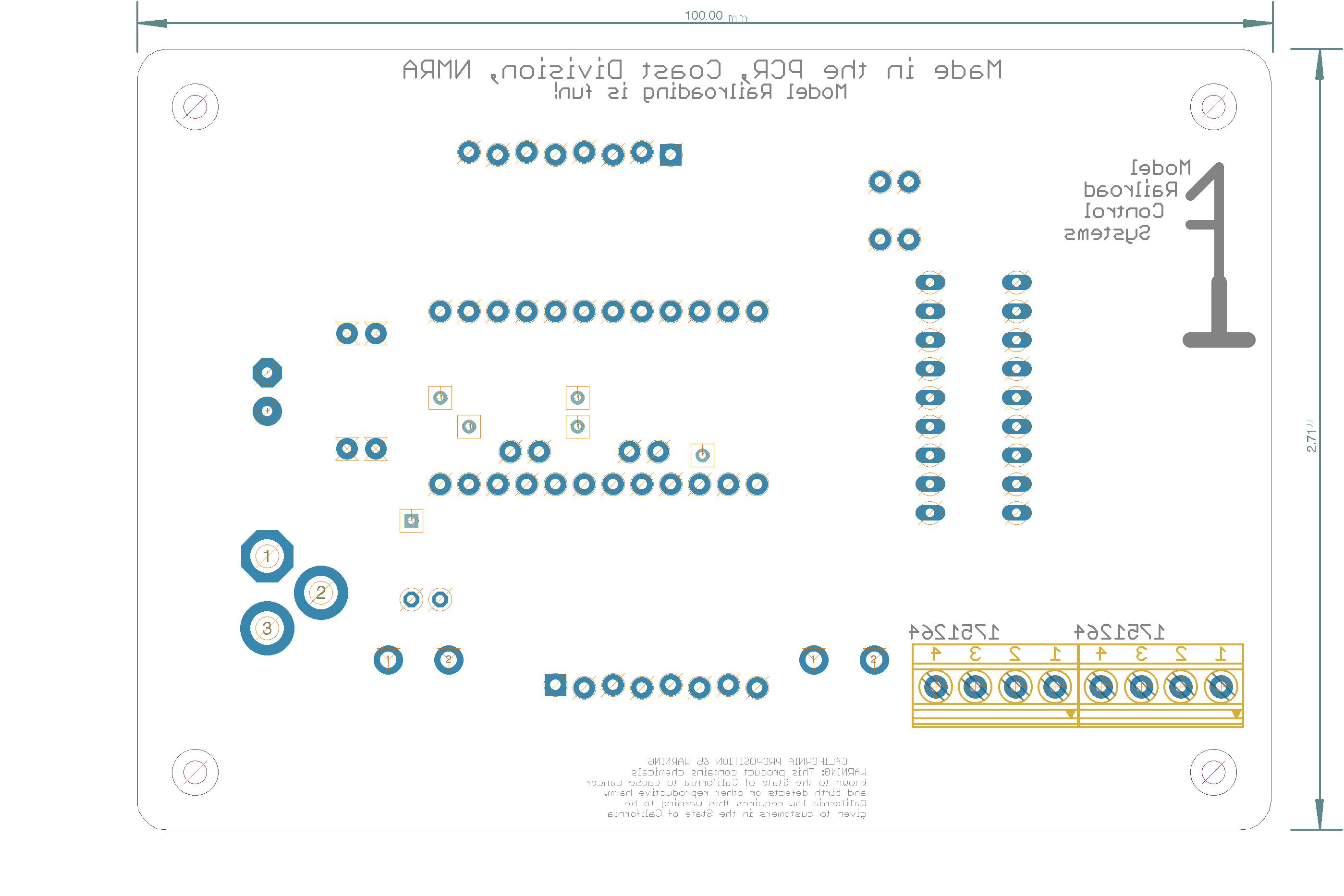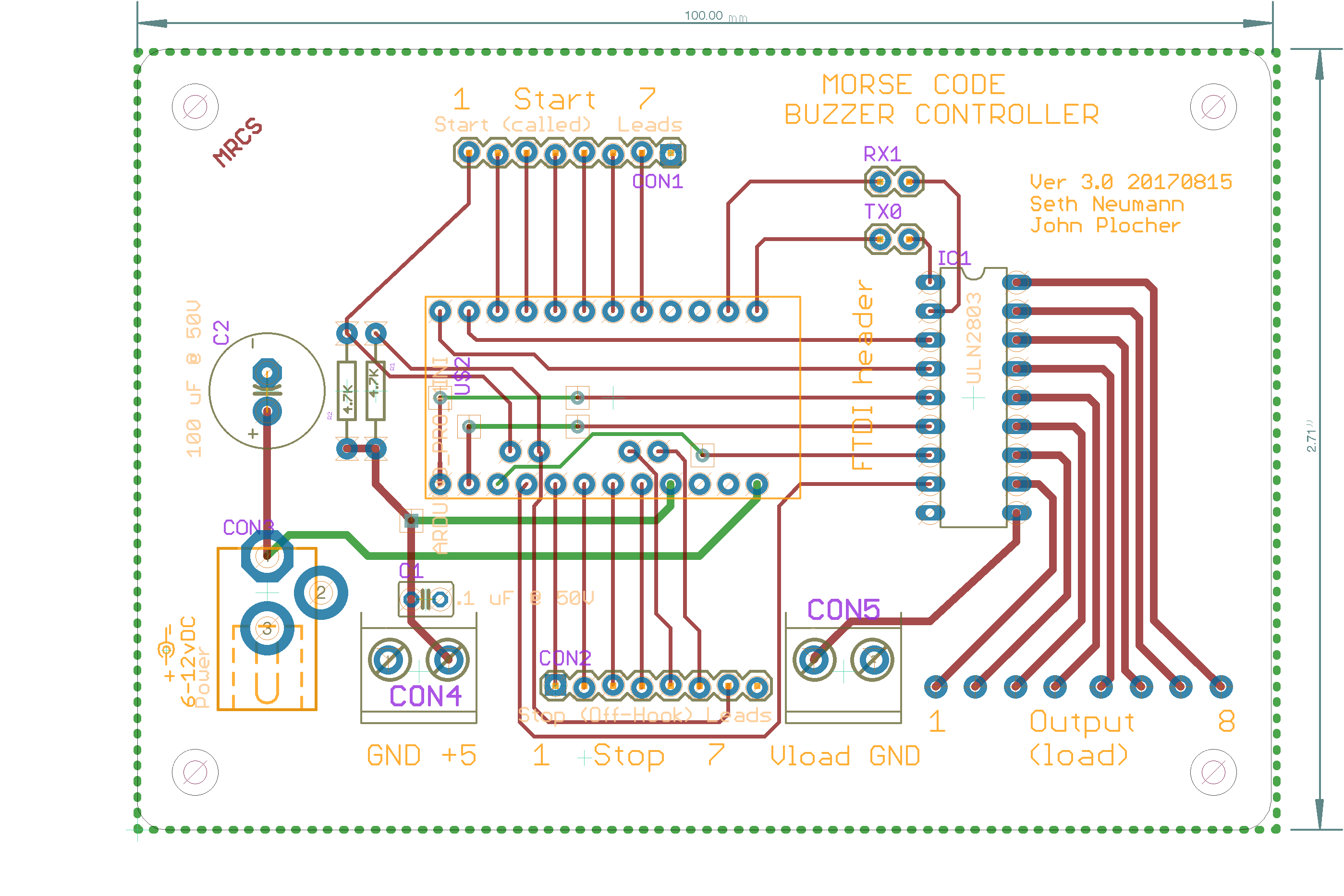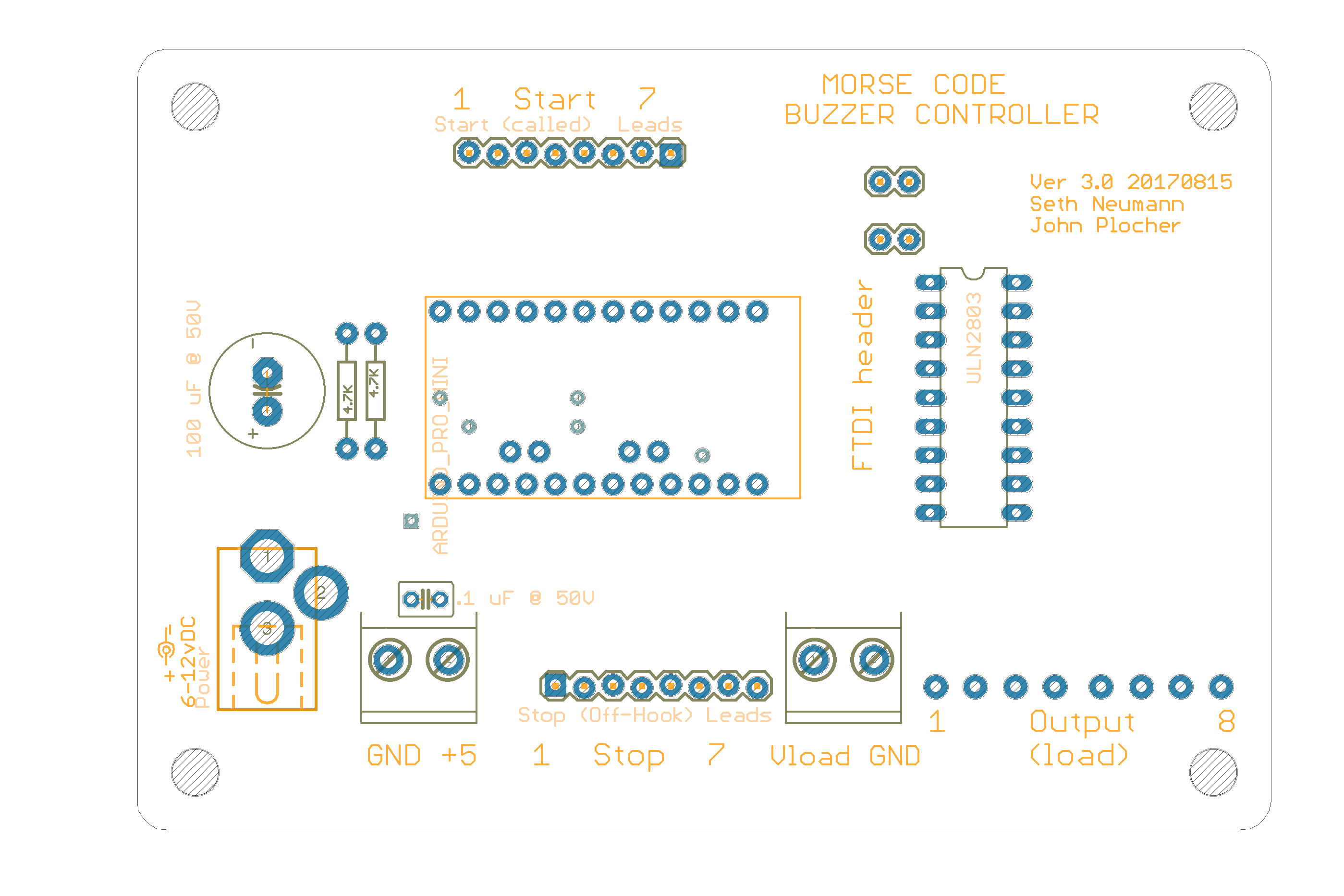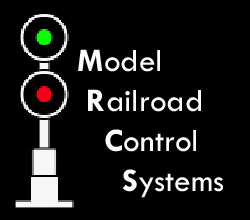
MRCS-Morse-Code-Buzzer
Morse Code Buzzer Board
v3.0 20170815
Documentation
On many operations-oriented model railroads, particularly those which a time-table and train-order (TT&TO) or tower-based dispatching system, there is a need to provide telephone communications between the dispatcher and the agent/operators. However, even on fairly large model railroads with multiple agent/operators, the physical distances between the operator positions are often insufficient to allow the operators to reliably distinguish that “hey that’s my phone ringing.”
The Morse Code Buzzer Controller board controls up to seven stations, tapping out each ringing station’s Telegraph code in Railroad Morse. An additional output can be designated an “ambience” buzzer that will randomly play one of several canned messages. These could be train orders, news reports, or “inside jokes”
The board accepts a push button input, stops when the phone goes off-hook (phone must have a suitable contact to provide an isolated ground) and will drive loads of up to 0.5 Amp at up to 48 Volts DC. All buzzer/sounder devices must use the same supply. Sounders must have have a coil resistance of greater than 40 ohms if using a 12V supply.
Requires a 6-9 VDC power supply rated at at least 0.5A. not included.
The on-board Arduino Pro-Mini runs the “station buzzers” sketch by Steve Williams.
doc
On many operations-oriented model railroads, particularly those which a time-table and train-order (TT&TO) or tower-based dispatching system, there is a need to provide telephone communications between the dispatcher and the agent/operators. However, even on fairly large model railroads with multiple agent/operators, the physical distances between the operator positions are often insufficient to allow the operators to reliably distinguish that “hey that’s my phone ringing.”
The Morse Code Buzzer Controller board controls up to seven stations, tapping out each ringing station’s Telegraph code in Railroad Morse. An additional output can be designated an “ambience” buzzer that will randomly play one of several canned messages. These could be train orders, news reports, or “inside jokes”
The board accepts a push button input, stops when the phone goes off-hook (phone must have a suitable contact to provide an isolated ground) and will drive loads of up to 0.5 Amp at up to 48 Volts DC. All buzzer/sounder devices must use the same supply. Sounders must have have a coil resistance of greater than 40 ohms if using a 12V supply.
Requires a 6-9 VDC power supply rated at at least 0.5A. not included.
The on-board Arduino Pro-Mini runs the “station buzzers” sketch by Steve Williams.
This technical documentation is licensed under the Creative Commons Attribution-NonCommercial-ShareAlike
